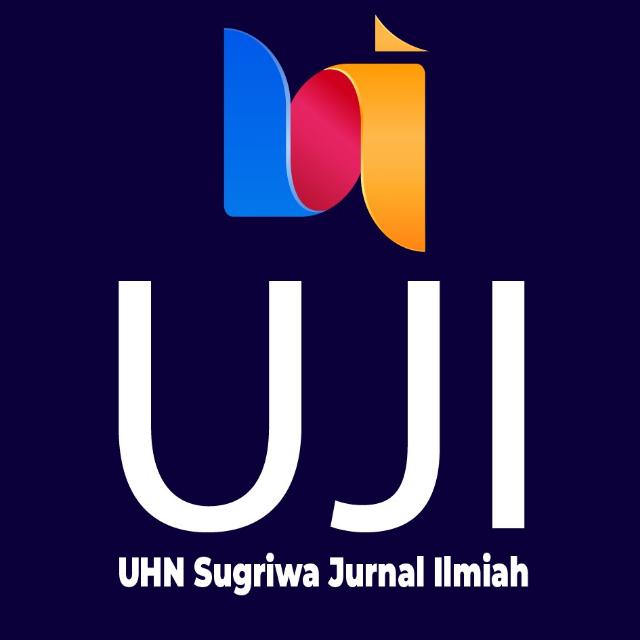Pemanfaatan Produk Lokal Olahan Rebon sebagai Makanan Tambahan untuk Meningkatkan Kadar IGF-1 Pada Anak Stunting Usia 24 - 60 bulan
DOI:
https://doi.org/10.25078/jyk.v8i1.4065Keywords:
IGF-1, Makanan Lokal, Udang Rebon, Stunting, Makanan TambahanAbstract
Berbagai gangguan pertumbuhan dan perkembangan sering dikaitkan dengan hormon IGF-1. Anak stunting cenderung memiliki kadar IGF-1 yang rendah. Kuantitas dan kualitas dari asupan protein memiliki efek kadar hormon IGF-1. Udang rebon adalah makanan lokal yang mengandung banyak protein dan mineral gizi. Studi quasy eksperimen ini melibatkan 88 anak stunting berusia 24 hingga 60 bulan. Sampel ini dibagi menjadi kelompok intervensi (n=44) dan kontrol (n=44). Selama sembilan puluh hari, anak-anak dalam kelompok intervensi menerima produk olahan rebon sebagai makanan tambahan. Pemeriksaan kadar serum IGF-1 dilakukan dengan metode ELISA pada hari ke 0 dan 90 pada kedua kelompok. Terdapat peningkatan rerata kadar hormon IGF-1 pada kelompok intervensi yang jauh lebih tinggi (49.25 ng/mL) dibandingkan dengan kelompok kontrol (14.82 ng/mL). Terdapat perbedaan kadar IGF-1 yang signifikan pada kelompok intervensi (p=0.0001). Rebon bermanfaat untuk meningkatkan kadar IGF-1 karena mengandung nilai gizi yang baik untuk anak. Rebon sebagai pangan lokal dapat menjadi pangan alternatif dan terjangkau yang bergizi dan bermanfaat bagi anak.
References
Anis Abdul Muis, Uun Kunaepah, Alina Hizni, P. S. (2017). Pengaruh Penambahan Bubuk Udang Rebon (Acetes Erythaeus) Terhadap Kandungan Gizi Dan Daya Terima Menu Pemberian Makanan Tambahan (Pmt) Balita Di Posyandu. Jurnal Ilmu Dan Teknologi Kesehatan, 4(2), 123–131.
Anton, S. S., Bukhari, A., Baso, A. J. A., Erika, K. A., & Syarif, I. (2021). Proximate, mineral and vitamin analysis of rebon shrimp diversification products as an indonesian local product: Supplementary food for malnourished children. Open Access Macedonian Journal of Medical Sciences, 9, 1208–1213. https://doi.org/10.3889/oamjms.2021.7632
Anton, S. S., Dewi, N. M. U. K., & Adiba, I. G. (2023). Kajian Determinan Stunting Pada Anak di Indonesia. Jurnal Yoga Dan Kesehatan, 6(2), 201–217.
Antonio, W. H. O., & Weise, S. (2012). WHA Global Nutrition Targets 2025 : Stunting Policy Brief.
Ban, B., & Zhao, Q. (2018). Nutritional Regulation of Growth Hormone / Insulin-like Growth Factor-1 Axis. Nutri Food Sci Int J, 7(5), 10–12. https://doi.org/10.19080/NFSIJ.2018.07.555725
Bikle, D. D., Tahimic, C., Chang, W., Wang, Y., Philippou, A., & Barton, E. R. (2015). Role of IGF-I signaling in muscle bone interactions. Bone, 80, 79–88. https://doi.org/10.1016/j.bone.2015.04.036
Blum, W. F., Alherbish, A., Alsagheir, A., El Awwa, A., Kaplan, W., Koledova, E., & Savage, M. O. (2018). The growth hormone-insulin-like growth factor-I axis in the diagnosis and treatment of growth disorders. Endocrine Connections, 7(6), R212–R222. https://doi.org/10.1530/EC-18-0099
Chevalley, T., Hoffmeyer, P., Bonjour, J.-P., & Rizzoli, R. (2010). Early serum IGF-I response to oral protein supplements in elderly women with a recent hip fracture. Clinical Nutrition, 29(1), 78–83.
Denas Symond, Fadil Oenzil, Eriyati Darwin, N. I. L. (2016). Efikasi Suplementasi Formula Tempe Bengkuang Terhadap Kadar Albumin Dan Z-Skor Berat Badan Menurut Umur (Bb/U) Pada Anak Gizi Kurang. Jurnal Gizi Dan Pangan, 11(1), 51–58. https://doi.org/10.25182/jgp.2016.11.1.
Ernawati, F., Prihatini, M., & Yuriestia, A. (2017). The Profile of Vegetable and Animal Protein Consumption of Stunting and Underweight Children Under Five Years Old in Indonesia. The Journal of Nutrition and Food Research, 39(2), 95–102. https://doi.org/10.22435/pgm.v39i2.6973.95-102
Fazeli, P. K., Misra, M., Goldstein, M., Miller, K. K., & Klibanski, A. (2010). Fibroblast growth factor-21 may mediate growth hormone resistance in anorexia nervosa. The Journal of Clinical Endocrinology and Metabolism, 95(1), 369–374. https://doi.org/10.1210/jc.2009-1730
Guo, J., Xie, J., Zhou, B., Găman, M.-A., Kord-Varkaneh, H., Clark, C. C. T., Salehi-Sahlabadi, A., Li, Y., Han, X., & Hao, Y. (2020). The influence of zinc supplementation on IGF-1 levels in humans: A systematic review and meta-analysis. Journal of King Saud University-Science, 32(3), 1824–1830.
Hawkes, C. P., & Grimberg, A. (2015). Insulin-like growth factor-I is a marker for the nutritional state. Pediatric Endocrinology Reviews, 13(2), 499–511.
Heemskerk, V. H., Daemen, M. A. R. C., & Buurman, W. A. (1999). Insulin-like Growth Factor-1 (IGF-1) and growth hormone (GH) in immunity and inflammation. Cytokine & Growth Factor Reviews, 10(1), 5–14. https://doi.org/https://doi.org/10.1016/S1359-6101(98)00022-7
Hoppe, C., Mølgaard, C., Juul, A., & Michaelsen, K. F. (2004). High intakes of skimmed milk, but not meat, increase serum IGF-I and IGFBP-3 in eight-year-old boys. European Journal of Clinical Nutrition, 58(9), 1211–1216.
Hossain, M., Nahar, B., Haque, M. A., Mondal, D., Mahfuz, M., Naila, N. N., Gazi, M. A., Hasan, M. M., Haque, N. M. S., & Haque, R. (2019). Serum adipokines, growth factors, and cytokines are independently associated with stunting in Bangladeshi children. Nutrients, 11(8), 1827.
Hurley, K. M., Yousafzai, A. K., & Lopez-Boo, F. (2016). Early child development and nutrition: A review of the benefits and challenges of implementing integrated interventions. Advances in Nutrition, 7(2), 357–363. https://doi.org/10.3945/an.115.010363
Kemenkes. (2023). Hasil Survei Status Gizi Indonesia (SSGI) 2022. Kemenkes, 1–7.
Kemenkes RI. (2022). Kemenkes RI no HK.01.07/MENKES/1928/2022 Tentang Pedoman Nasional Pelayanan Kedokteran Tata Laksana Stunting. 1–52.
Kementerian Kesehatan RI. (2023). Hasil Survei Status Gizi Indonesia 2022. In Kementerian Kesehatan Republik Indonesia. https://promkes.kemkes.go.id/materi-hasil-survei-status-gizi-indonesia-ssgi-2022
Laron, Z. (2001). Insulin-like growth factor 1 (IGF-1): a growth hormone. Molecular Pathology : MP, 54(5), 311–316. https://doi.org/10.1136/mp.54.5.311
Livingstone, C. (2013). Insulin-like growth factor-I (IGF-I) and clinical nutrition. Clinical Science, 125(6), 265–280.
Mikhail WZA, Sabhy HM, El-sayed HH, Khairy SA, S. (2013). Effect of nutritional status on growth pattern of stunted preschool children in Egypt. Acad J Nutr, 2(1), 1–9.
Myrelid, Å. (2012). Current Knowledge on Growth Hormone and Insulin-Like Growth Factors and their Role in the Central Nervous System: Growth Hormone in Down Syndrome. The Open Endocrinology Journal, 6(1), 103–109. https://doi.org/10.2174/1874216501206010103
Ninh, N. X., Thissen, J.-P., Collette, L., Gerard, G., Khoi, H. H., & Ketelslegers, J.-M. (1996). Zinc supplementation increases growth and circulating insulin-like growth factor I (IGF-I) in growth-retarded Vietnamese children. The American Journal of Clinical Nutrition, 63(4), 514–519.
PERSAGI. (2009). Tabel Komposisi Pangan Indonesia. PT. Elex Media Komputindo, Kompas Gramedia.
Prentice A, B. C. (1993). A N APPRAISAL OF THE ADEQUACY OF DIETARY MINERAL INTAKES I N DEVELOPING COUNTRIES FOR BONE GROWTH A N D DEVELOPMENT I N CHILDREN. Nutrition Research Reviews, 6(6), 51–69.
Rahman, M. A., Halder, H. R., Rahman, M. S., & Parvez, M. (2021). Poverty and childhood malnutrition: Evidence-based on a nationally representative survey of Bangladesh. PloS One, 16(8), e0256235. https://doi.org/10.1371/journal.pone.0256235
Riskesdas, K. (2018). Hasil Utama Riset Kesehata Dasar (RISKESDAS). Journal of Physics A: Mathematical and Theoretical, 44(8), 1–200. https://doi.org/10.1088/1751-8113/44/8/085201
Teja, M. (2019). Stunting Balita Indonesia Dan. Pusat Penelitian Badan Keahlian DPR RI, XI no 22(November), 13–18.
Tessema, M., Gunaratna, N. S., Brouwer, I. D., Donato, K., Cohen, J. L., McConnell, M., Belachew, T., Belayneh, D., & De Groote, H. (2018). Associations among high-quality protein and energy intake, serum transthyretin, serum amino acids and linear growth of children in Ethiopia. Nutrients, 10(11), 1776.
Titaley, C. R., Ariawan, I., Hapsari, D., Muasyaroh, A., & Dibley, M. J. (2019). Determinants of the stunting of children under two years old in Indonesia: A multilevel analysis of the 2013 Indonesia basic health survey. Nutrients, 11(5). https://doi.org/10.3390/nu11051106
UNICEF, WHO, & World Bank. (2019). Levels and trends in child malnutrition.
UNICEF, WHO, & World Bank Group. (2023). Levels and trends in child malnutrition. In Unicef. https://doi.org/10.18356/6ef1e09a-en
Vaivada, T., Akseer, N., Akseer, S., Somaskandan, A., Stefopulos, M., & Bhutta, Z. A. (2020). Stunting in childhood: An overview of global burden, trends, determinants, and drivers of decline. American Journal of Clinical Nutrition, 112, 777S-791S. https://doi.org/10.1093/ajcn/nqaa159
Wahyudi, R., Indriani, H., & Haris, M. S. (2022). Tahu Sabar (Sari Bahari) Upaya Pemanfaatan Limbah Produksi Garam sebagai Tahu Bahan Organik Ramah Lingkungan bagi Penderita Stunting. Amerta Nutrition, 6(1), 44. https://doi.org/10.20473/amnt.v6i1.2022.44-52
Wang, X., Xing, K. H., Qi, J., Guan, Y., & Zhang, J. (2013). Analysis of the relationship of Insulin-like Growth Factor-1 to the growth velocity and feeding of healthy infants. Growth Hormone & IGF Research, 23(6), 215–219.
WHO. (2023). Stunting prevalence among children under 5 years of age (%) (model-based estimates). Global Health Observatory Data Repository, 5, 35. https://www.who.int/data/gho/data/indicators/indicator-details/GHO/gho-jme-stunting-prevalence
Zhu, K., Meng, X., Kerr, D. A., Devine, A., Solah, V., Binns, C. W., & Prince, R. L. (2011). The effects of a two‐year randomized, controlled trial of whey protein supplementation on bone structure, IGF‐1, and urinary calcium excretion in older postmenopausal women. Journal of Bone and Mineral Research, 26(9), 2298–2306.


















